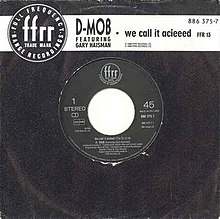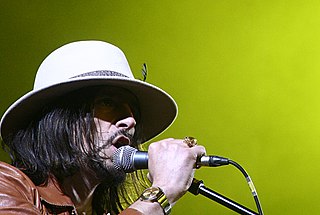
The Future Sound of London is a British electronic music duo composed of Garry Cobain and Brian Dougans. They have been described as a "boundary-pushing" electronic act, covering techno, ambient, house music, trip hop, psychedelia, and dub.
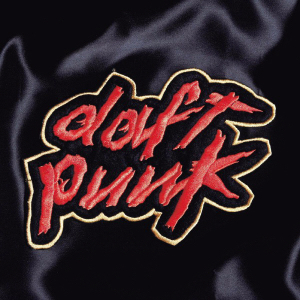
Homework is the debut studio album by the French electronic music duo Daft Punk, released on 20 January 1997 by Virgin Records and Soma Quality Recordings. It was later released in the United States on 25 March 1997. As the duo's first project on a major label, they produced the album's tracks without plans to release them, but after initially considering releasing them as separate singles, they considered the material good enough for an album.

"No Limit" is a song recorded by Belgian/Dutch Eurodance group 2 Unlimited, released in January 1993 by Byte, ZYX and PWL. It was their fifth single in total and the first to be released from their second album, No Limits! (1993). Co-written by the group's Ray Slijngaard and Anita Dels, the song became one of their most commercially successful singles, especially in Europe, reaching the number-one spot in 35 countries and the top 10 in several others. Like previous releases, the UK version of the single removed all of the raps from Slijngaard, leaving just Dels' vocals. One word from the rap was kept, the word 'Techno' which was looped and repeated during the middle of the song, turning the line into "Techno! Techno! Techno! Techno!" and giving the song an extra vocal hook. Its accompanying music video was directed by Nick Burgess-Jones and received heavy rotation on MTV Europe.

Italo disco is a music genre which originated in Italy in the late 1970s and was mainly produced in the early 1980s. Italo disco evolved from the then-current underground dance, pop, and electronic music, both domestic and foreign and developed into a diverse genre. The genre employs electronic drums, drum machines, synthesizers, and occasionally vocoders. It is usually sung in English, and to a lesser extent in Italian and Spanish.
Inner City is an American electronic music group that formed in Detroit, Michigan, in 1987. The group was originally composed of the record producer and composer Kevin Saunderson and the Chicago, Illinois, vocalist Paris Grey. Saunderson is renowned as one of the Belleville Three—along with Juan Atkins and Derrick May—high school friends who later originated the Detroit techno sound. In February 2018, Billboard magazine ranked them as the 69th most successful dance artists of all-time.
Koto was an Italo disco group that originally consisted of Anfrando Maiola and Stefano Cundari, later with the Dutch composer Michiel van der Kuy.
D Mob, also known as Dancin' Danny D or simply Danny D, is a British music producer and remixer. His most notable track was "C'mon and Get My Love" with Cathy Dennis on the vocals, which peaked at number 10 on the U.S. Hot 100 chart on March 17, 1990.
Gary Haisman was an English singer and one of three acts whose No. 1 songs on the Billboard Hot Dance Music/Club Play chart were featured on D Mob’s A Little Bit of This, a Little Bit of That album. His contribution to the set was the two-sided track “We Call It Acieed”/“Trance Dance”, which was the first of D Mob’s four straight No. 1 hits on the Dance chart in 1989.

"Good Life" is a song by American electronic music group Inner City, featuring vocals by Paris Grey, and was released in November 1988 as the second single from their debut album, Paradise (1989). It is written and produced by Kevin Saunderson, and became a hit all over the world, reaching number-one in Finland and number four in the UK. In the US, it peaked at number-one on the Billboard Hot Dance Club Play chart. Its music video is directed by Andrew Doucette and filmed in London. "Good Life", along with "Big Fun", has been considered for being prototypes for Belgian act Technotronic's 1989 hit "Pump Up The Jam", and is today widely considered a classic of its genre.
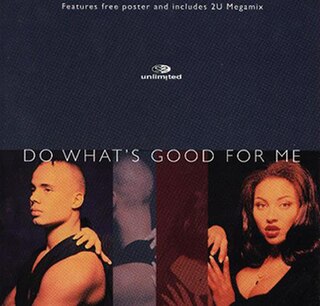
"Do What's Good for Me" is a song Belgian-Dutch Eurodance band 2 Unlimited, released in October 1995 via Byte and ZYX Records as the first single from the band's first greatest hits compilation album, Hits Unlimited (1995). Co-written by bandmembers Anita Dels and Ray Slijngaard, the song was a hit in Europe, reaching the top 10 in Finland and Spain. Its music video was directed by Nigel Simpkiss.

"Need You Tonight" is a song by the Australian rock band INXS, released as the first single from their 1987 album, Kick, as well as the fourth song on the album. It is the only INXS single to reach No. 1 on the Billboard Hot 100. It also achieved their highest charting position in the United Kingdom, where the song reached number two on the UK Singles Chart; however, this peak was only reached after a re-release of the single in November 1988. On its first run on the UK charts in October 1987, it stalled at No. 58. It was one of the last songs recorded for the album, yet it would arguably become the band's signature song.

"Sweet Dreams (Are Made of This)" is a song by the British new wave music duo Eurythmics. It was released as the fourth and final single from their second album, Sweet Dreams (Are Made of This), in January 1983. It was their breakthrough hit, establishing the duo worldwide. It reached number two on the UK Singles Chart in March 1983, and number one on the US Billboard Hot 100 six months later; it was their first single released in the US.
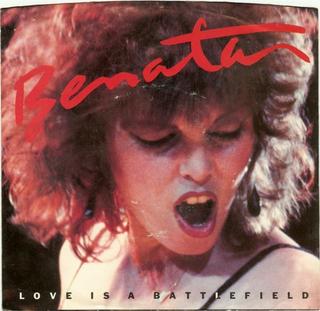
"Love Is a Battlefield" is a song by American singer Pat Benatar, recorded and released on September 12, 1983, as a single from Benatar's live album Live from Earth (1983), though the song itself was a studio recording. It was written by Holly Knight and Mike Chapman. The song was ranked at number 30 in VH1's list of the 100 Greatest Songs of the 1980s. "Love Is a Battlefield" went on to sell over a million records.
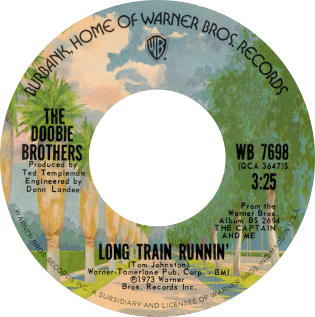
"Long Train Runnin'" is a song recorded by American rock band the Doobie Brothers and written by band member Tom Johnston. It was included on the band's 1973 album The Captain and Me and was released as a single, becoming a hit and peaking at No. 8 on the US Billboard Hot 100.

Brian Robert Dougans is a British musician, and a member of the British electronic duo, the Future Sound of London (FSOL).

"Sesame's Treet" is a 1992 single by the English rave group Smart E's. It is a remix of "Can You Tell Me How to Get to Sesame Street?", with the song's title being a pun on "Sesame Street". The song reached No. 2 on the UK Singles Chart in July 1992 and peaked within the top 10 in Australia, Ireland, and New Zealand. In the United States, it reached No. 60 on the Billboard Hot 100 chart and topped the Billboard Maxi-Singles Sales ranking.

Eurotechno refers to the musical soundtrack by English group Stakker for their 1989 experimental short film of the same name. The original film was an avant-garde experiment and features rapidly shifting colourful computer graphics, reflecting the influence of rave culture. Although the visuals of the film were primarily the work of Stakker members Marek Pytel, Mark McClean and Colin Scott, the musical soundtrack was largely the work of Brian Dougans, later of The Future Sound of London. The 25-minute soundtrack was recorded using a Roland TB-303, and reflects the fast-shifting momentum of the film by incorporating fragmented elements of acid house, Chicago house and Detroit techno that shift after their brief appearances, thus contributing to an intricately layered style.
Acid house is a subgenre of house music developed around the mid-1980s by DJs from Chicago. The style is defined primarily by the squelching sounds and basslines of the Roland TB-303 electronic bass synthesizer-sequencer, an innovation attributed to Chicago artists Phuture and Sleezy D circa 1986.

"Hello! " is a song by German band Scooter. The song samples the refrain from Gary Glitter's 1973 single "Hello, Hello, I'm Back Again". It was released in October 2005 as the lead single from the album Who's Got the Last Laugh Now?.
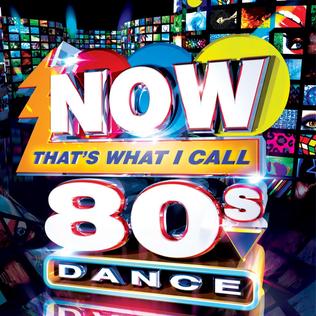
Now That's What I Call 80s Dance or Now 80s Dance is a triple-disc compilation album which was released in the United Kingdom on 14 October 2013. It includes nearly 60 of the biggest dance anthems of the 1980s era.
